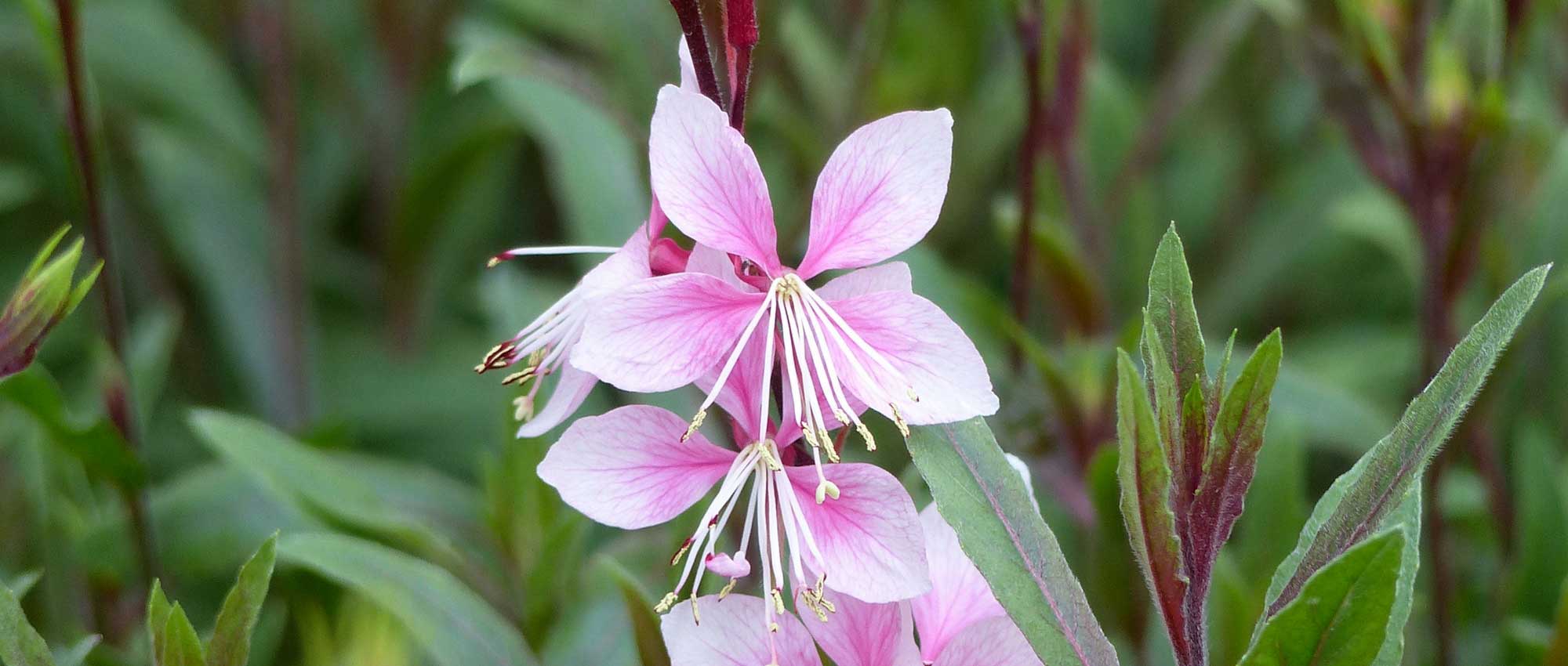
Gaura lindheimeri: 8 successful pairing ideas
Discover how to incorporate it into your borders!
Contents
With its free habit and generous flowering lasting four to six months, Gaura lindheimeri is the essential touch to add volume and lightness to your flower beds. It is a lovely perennial that brings a soft and bright tone wherever it is planted. It pairs well with other grasses in a contemporary garden, or in a very colourful and flowering English-style border.
Because it is very fine and light, we recommend planting Gaura in groups (in clumps of at least 3 to 5 young plants) rather than as isolated specimens. This will give more volume to the border. It combines very well with flowers in pastel colours such as pink, mauve, or blue, like roses, peonies, or lavenders. To complement these soft shades and enhance them, use silver foliage, such as that of Stachys byzantina.
However, be cautious if you plant it at the edge of a border: the taller varieties tend to flop. You will need to prune it regularly to maintain its compact habit, allow it to lean on sturdier plants, or stake it.
As long as it is planted in the sun, Gaura is truly versatile… It will easily find its place in your garden!
In a naturalistic garden!
If gaura is so successful, it’s undoubtedly because its natural look and airy flowering remind us of wildflower fields… So don’t hesitate to pair it with other cottage-style plants, such as scabious, asters, echinacea, or cosmos. When combined with grasses and flowers with a free and airy habit, gaura is truly perfect for creating a natural meadow look!
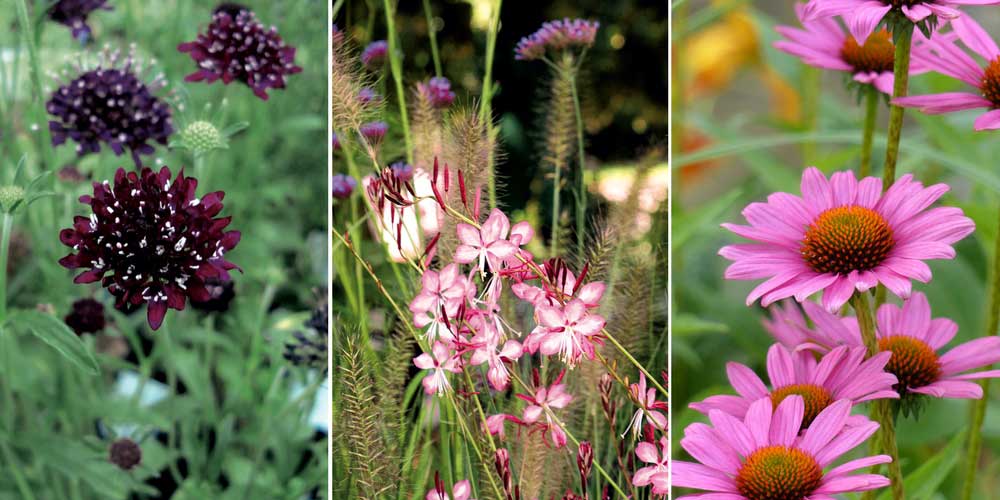
Scabiosa atropurpurea ‘Chile Black’, Gaura ‘Rosy Jane’ and Echinacea purpurea ‘The King’
Read also
Gaura: planting and growingIn a mixed border, to create a colourful flowerbed, in the English style
Create a very colourful flower bed composed of a great diversity of flowers, typical of English gardens. Plant bush roses or shrub peonies in the background. The combination of white, pink, and mauve tones will inevitably create a romantic effect. Gaura pairs wonderfully with roses! It beautifully dresses their base, offering delicate flowering in the same tones. Position gaura alongside other perennials, such as penstemons, agastaches, or rudbeckias… And especially with Buenos Aires Verbena, which, like Gaura, grows quickly and has airy flowers. Together, they create a flower bed that requires little maintenance and is drought-resistant.

Gaura ‘Siskyou Pink’ (photo Otterman56), Penstemon ‘Rubicundus’ and rose ‘Marguerite Hilling’
Discover other Gaura - Bee Blossom
View all →Available in 3 sizes
Available in 4 sizes
Available in 0 sizes
Available in 2 sizes
Available in 3 sizes
Available in 2 sizes
Available in 3 sizes
Available in 1 sizes
Available in 3 sizes
Available in 1 sizes
With grasses, for a light and graphic touch
Gaura is perfect for creating a garden of grasses and perennials, both contemporary and easy to maintain. The lightness of gaura pairs beautifully with the delicacy of grasses. Thus, it complements stipa (angel hair) and pennisetum very well, creating a bed where the keywords are simplicity and lightness!

Stipa tenuifolia, Gaura ‘Cherry Brandy’ and Pennisetum setaceum
In a Mediterranean garden
Gaura is a drought-tolerant plant. You can use it in combination with Mediterranean plants to create a mineral-dominant garden that requires little maintenance. Place a few young plants of lavender, sage, or perovskia alongside it. Also, enjoy the bright flowering of Jerusalem Sage, Phlomis fruticosa! This type of garden will be perfect if your land is already dry, well-draining, or sloped.
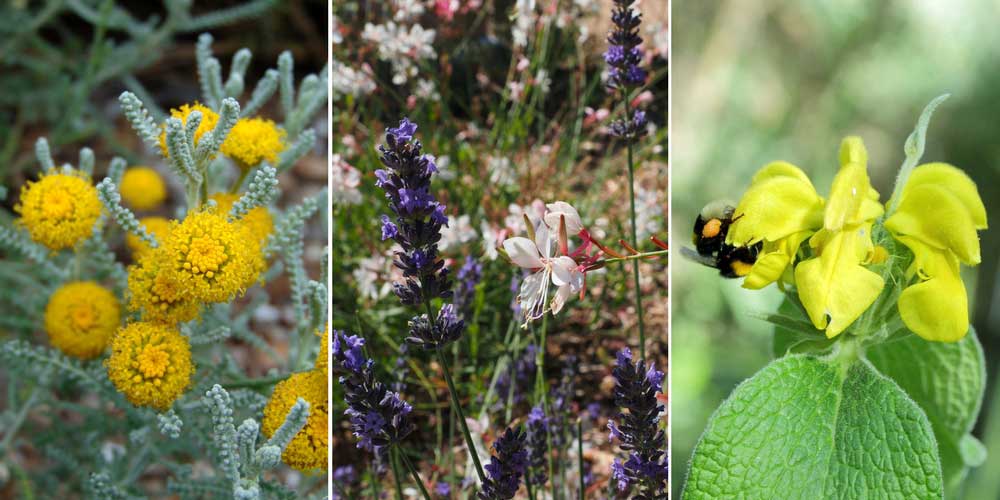
Santolina chamaecyparissus, Gaura lindheimeri, and lavender, Phlomis fruticosa (photo C. T. Johansson)
To add volume to a somewhat flat flowerbed
Installed behind shorter plants, such as bergenias, gaura lightens the flowerbed with its long, slender floral stems. It creates a beautiful floral backdrop that adds depth to a flowerbed of shorter plants, composed for example of heucheras, alchemillas, ophiopogons, Ajuga reptans or sedums…
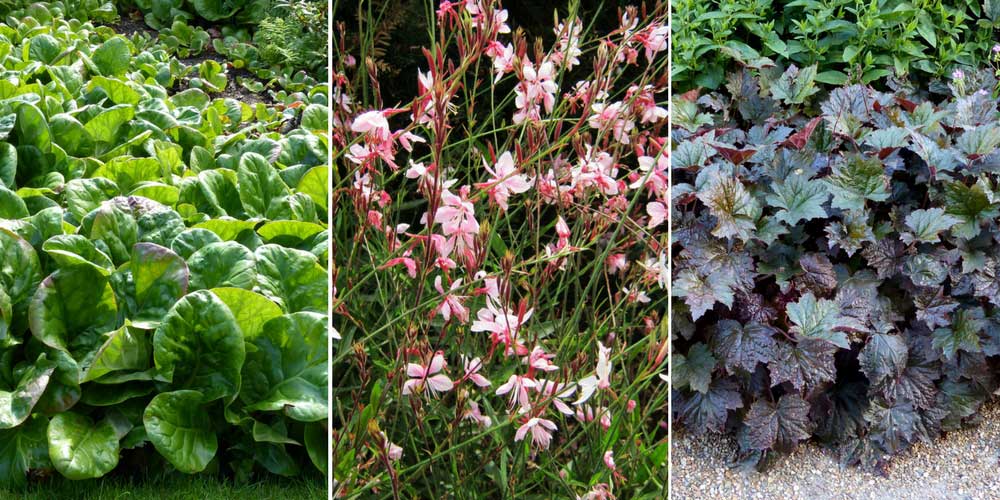
Bergenia ciliata, Gaura lindheimeri and Heuchera micrantha ‘Palace Purple’
To lighten a dark flowerbed or soften bright colours
Placed with plants featuring rather dark foliage, it brings a lot of clarity! You can take advantage of this to create colour contrasts. With its vibrant flowering, it draws the eye to a particular point in the garden (notably the varieties with pink flowers, such as ‘Siskiyou pink’). It also softens the bright colours of flowers, such as those of Lychnis coronaria or gaillardes.

Ajuga reptans ‘Mahogany Jaldety’, Gaura lindheimeri and Physocarpus ‘Midnight’
On the edge, to play with contrasts
Gaura stands out well in short grass meadow, as it creates a contrast with the straight lines of the borders. It softens formal lines with its airy and free appearance. If you have a straight and sober path, planting gauras along it will transform it into a lively and bright walkway! Pair it with other plants that have a free habit and airy flowering, such as Buenos Aires verbena, delphiniums, and Centranthus ruber. You can add lavenders, nepeta, or Phlomis fruticosa. To prevent it from flopping, be sure to prune it regularly or stake it.
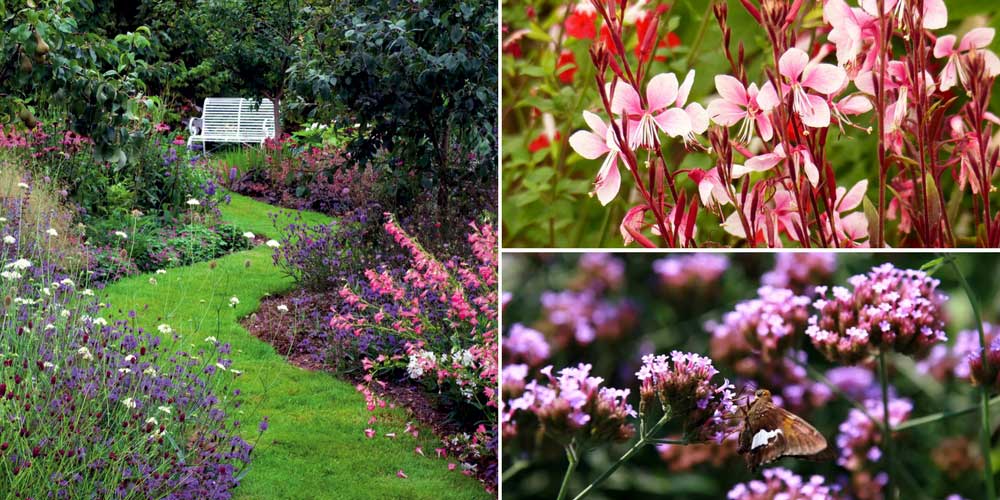
Path border scene with Verbena rigida-Penstemons, Sanguisorbes, and Scabious columbaria (photo: Dales Farm-NGS Norfolk -Credit Photo GAP Juliette Wade) / Gaura lindheimeri ‘Cherry Brandy’ / Verbena bonariensis (photo David J. Stang)
In bowls or planters
One of the major trends at the moment is to mix traditional annuals with fast-growing perennials in planters, which adds a sense of volume to the compositions. Gaura is one of the best candidates for these unorthodox… and aesthetic blends!
It will create a stunning effect if you plant it in bowls, either alone or accompanied by sages, ornamental grasses, hardy geraniums, or bidens. Ensure you choose a container that is large and deep enough, and place a layer of gravel at the bottom to facilitate drainage.

Scaevola aemula (photo Nemracc), Gaura lindheimeri ‘Snowbird’ and Bidens ‘Firelight’
- Subscribe!
- Contents































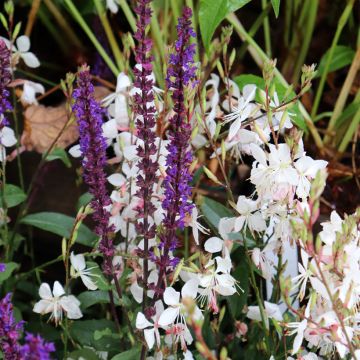
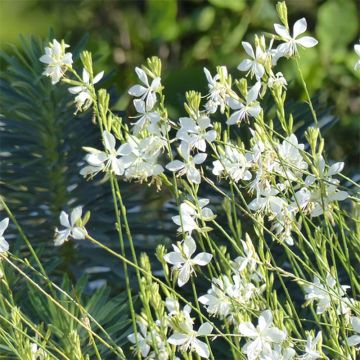
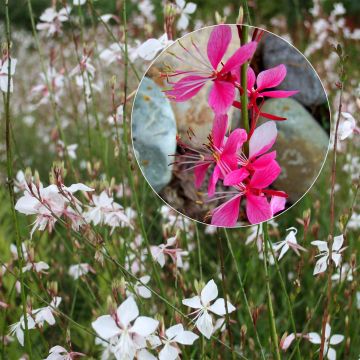
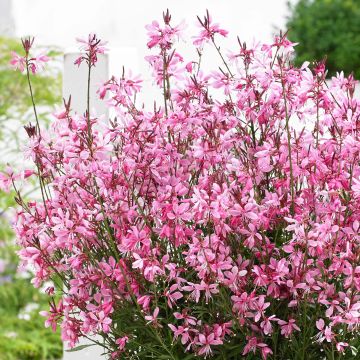


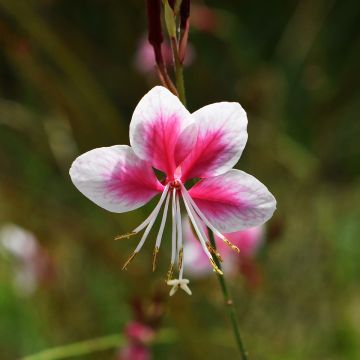

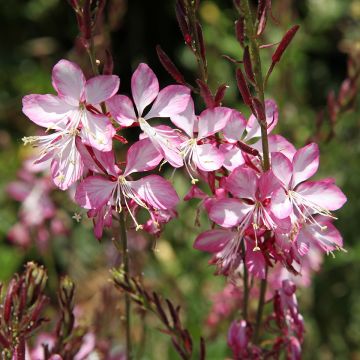
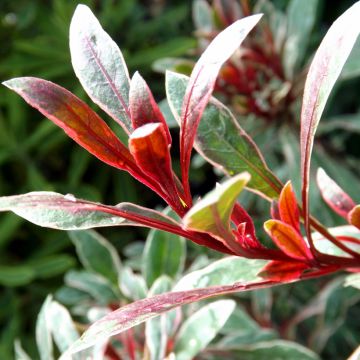
Comments